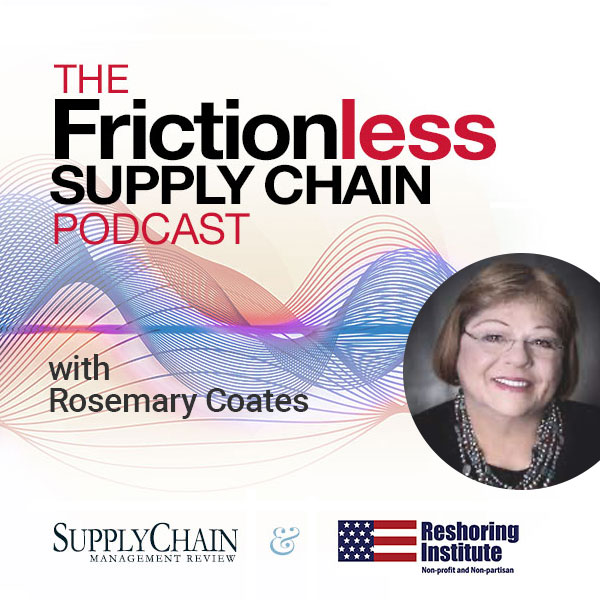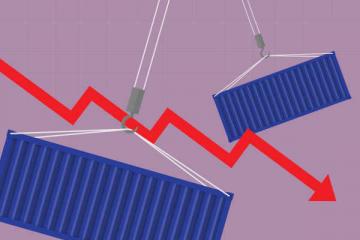Sorry, but your login has failed. Please recheck your login information and resubmit. If your subscription has expired, renew here.
May-June 2020
Most of the time, when I sit down to write this column I look at what I wrote for the previous year’s issue for perspective or inspiration. The truth is, nothing I’ve written before, or experienced in my 64 years, has prepared me for COVID-19. I’m sure that most, if not all, of you can say the same. Yes, it’s a global crisis, but closer to home, it’s a supply chain crisis. Quite simply, even the best supply chains, at least those that are still operating, are broken. Browse this issue archive.Need Help? Contact customer service 847-559-7581 More options
China is the world’s largest manufacturer, logging a massive $2.5 trillion in output produced by more than 130 million factory workers, according to data from the United Nations Conference on Trade and Development. Not only is it the largest, but China has also long been the world’s low cost, large-scale manufacturer of choice for a large swath of industries from consumer products, apparel, footwear, toys and many more. This is due in large part to a pool of very, very low-cost labor. Combined with a strong infrastructure in roads, modern factories and limited regulation, China’s production meets insatiable demand from the United States and other countries for cheap goods.
For example, Santa’s sleigh has been filled with toys from China and Hong Kong for years, representing nearly 70% of the world’s toy production (See Figure 1 ). Putting that into perspective, those two locales represent almost twice as much production capacity as the rest of the world’s toy manufacturing companies combined.
As the elves will attest, the toy industry is labor intensive: Imagine a Build-A-Bear party scaled up several thousand times. Built up over nearly 50 years, the Chinese toy industry is marked by very large factories, some employing more than 50,000 workers, and an ecosystem of feeder suppliers, many within 50 miles of the main factory.
While Chinese labor costs have been rising steadily at a rate of 10% to 15% year-on-year, leading toy customers have been slow to move into other countries simply because it’s hard to replicate China’s enormous manufacturing capacity, its massive reliable infrastructure and high productivity. When it comes to product quality and safety, China offers higher performance than other low-cost countries, according to QIMA. Simply put, there isn’t a readily available alternative supply chain outside of China.
That said, the supply of toys from China has been disrupted, first by trade tariffs and now by COVID-19, resulting in a search for new supply from countries like India and Vietnam. However, that is easier said than done for several reasons.
- How do you make a product from scratch? Much of what makes the process work is a combination of tribal knowledge and trusted partnerships that aren’t readily documented. While procurement organizations may make a show of seeking out new manufacturing partners, they always end up using the same suppliers because of that combination. That is especially the case because more than 70% of toys are new each year and must be brought to market in time for the holiday season. You can assume that the risk of onboarding new suppliers for the holiday season is not high on procurement goal sheets.
- How do you scale up? Most of the current suppliers in the alternative countries are small and would need capital investments to scale up. Moreover, the lead time is often long based on licensing agreements and ramp up to uncertain market demand.

This complete article is available to subscribers only.
Log in now for full access or start your PLUS+ subscription for instant access.
SC
MR
Sorry, but your login has failed. Please recheck your login information and resubmit. If your subscription has expired, renew here.
May-June 2020
Most of the time, when I sit down to write this column I look at what I wrote for the previous year’s issue for perspective or inspiration. The truth is, nothing I’ve written before, or experienced in my 64 years,… Browse this issue archive. Access your online digital edition. Download a PDF file of the May-June 2020 issue.China is the world's largest manufacturer, logging a massive $2.5 trillion in output produced by more than 130 million factory workers, according to data from the United Nations Conference on Trade and Development. Not only is it the largest, but China has also long been the world's low cost, large-scale manufacturer of choice for a large swath of industries from consumer products, apparel, footwear, toys and many more. This is due in large part to a pool of very, very low-cost labor. Combined with a strong infrastructure in roads, modern factories and limited regulation, China's production meets insatiable demand from the United States and other countries for cheap goods.
For example, Santa's sleigh has been filled with toys from China and Hong Kong for years, representing nearly 70% of the world's toy production (See Figure 1 ). Putting that into perspective, those two locales represent almost twice as much production capacity as the rest of the world's toy manufacturing companies combined.
As the elves will attest, the toy industry is labor intensive: Imagine a Build-A-Bear party scaled up several thousand times. Built up over nearly 50 years, the Chinese toy industry is marked by very large factories, some employing more than 50,000 workers, and an ecosystem of feeder suppliers, many within 50 miles of the main factory.
While Chinese labor costs have been rising steadily at a rate of 10% to 15% year-on-year, leading toy customers have been slow to move into other countries simply because it's hard to replicate China's enormous manufacturing capacity, its massive reliable infrastructure and high productivity. When it comes to product quality and safety, China offers higher performance than other low-cost countries, according to QIMA. Simply put, there isn't a readily available alternative supply chain outside of China.
That said, the supply of toys from China has been disrupted, first by trade tariffs and now by COVID-19, resulting in a search for new supply from countries like India and Vietnam. However, that is easier said than done for several reasons.
- How do you make a product from scratch? Much of what makes the process work is a combination of tribal knowledge and trusted partnerships that aren't readily documented. While procurement organizations may make a show of seeking out new manufacturing partners, they always end up using the same suppliers because of that combination. That is especially the case because more than 70% of toys are new each year and must be brought to market in time for the holiday season. You can assume that the risk of onboarding new suppliers for the holiday season is not high on procurement goal sheets.
- How do you scale up? Most of the current suppliers in the alternative countries are small and would need capital investments to scale up. Moreover, the lead time is often long based on licensing agreements and ramp up to uncertain market demand.
 SUBSCRIBERS: Click here to download PDF of the full article.
SUBSCRIBERS: Click here to download PDF of the full article.
SC
MR

Latest Supply Chain News
- Joseph Esteves named CEO of SGS Maine Pointe
- Employees, employers hold divergent views on upskilling the workforce
- April manufacturing output slides after growing in March
- Q1 sees a solid finish with positive U.S.-bound import growth, notes S&P Global Market Intelligence
- World Trade Centers offers a helping hand to create resilient, interconnected supply chains
- More News
Latest Podcast

 Explore
Explore
Procurement & Sourcing News
- April manufacturing output slides after growing in March
- World Trade Centers offers a helping hand to create resilient, interconnected supply chains
- Bridging the ESG gap in supply chain management: From ambition to action
- Israel, Ukraine aid package to increase pressure on aerospace and defense supply chains
- How CPG brands can deliver on supplier diversity promises
- How S&OP provides the answer to in-demand products
- More Procurement & Sourcing
Latest Procurement & Sourcing Resources

Subscribe

Supply Chain Management Review delivers the best industry content.

Editors’ Picks






